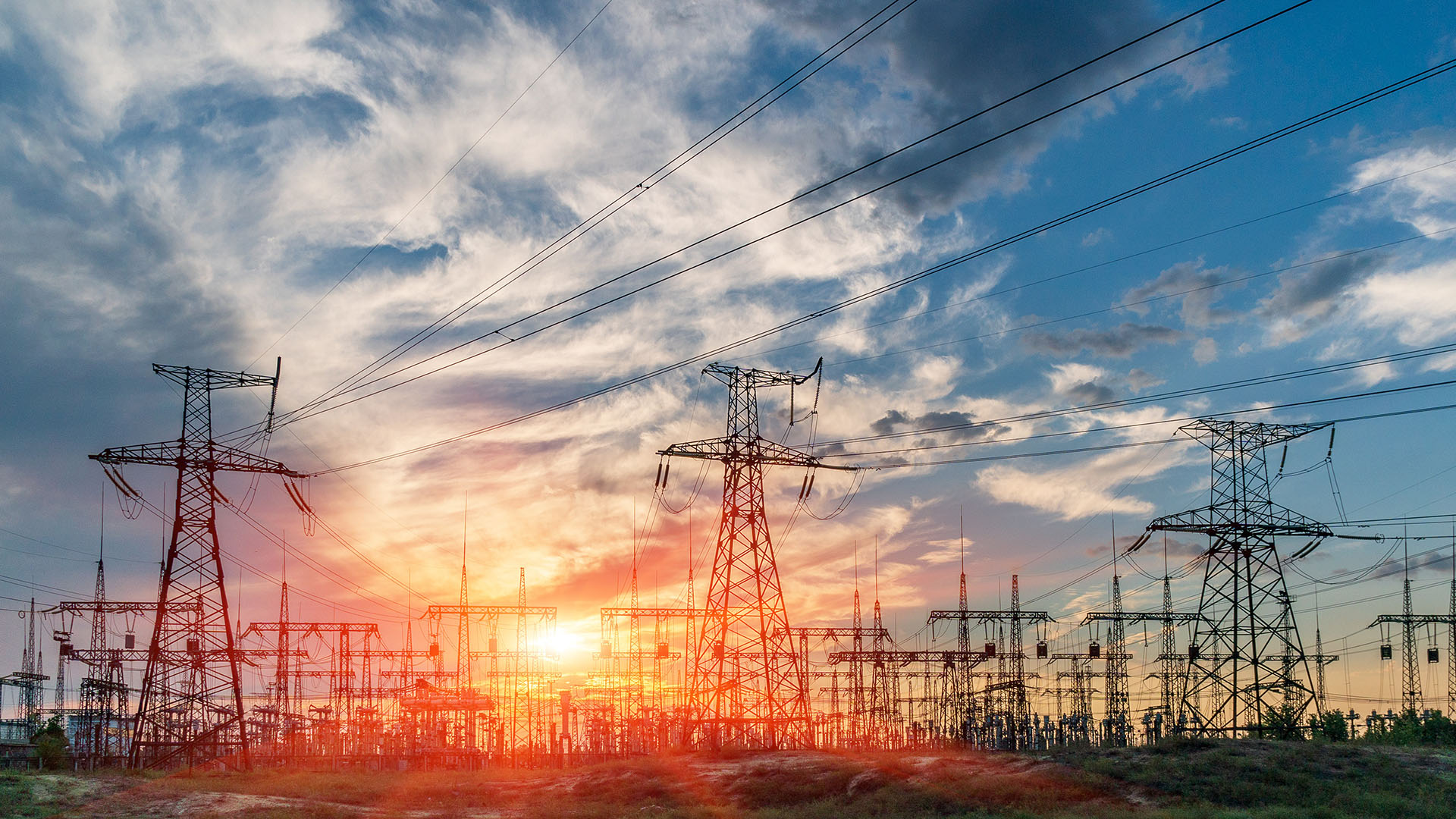Insights

EPA’s proposed power plant GHG rule completes Biden Administration’s CCS and hydrogen stimulus package
United States | Publication | June 2023
The next phase of the ongoing war over electric power plant emissions has arrived, with the US Environmental Protection Agency (EPA) relying on carbon capture and sequestration (CCS) and low-carbon hydrogen as the core technologies supporting newly proposed rules intended to significantly reduce greenhouse gas (GHG) emissions from fossil fuel-fired electric generating units.
Although power plants are its focus, EPA's proposal also could spur CCS and hydrogen maturation and expansion, providing broader transition options for lower-carbon energy, chemical production and transportation. Spurred by the Biden Administration's Inflation Reduction Act (IRA) stimulus package, including the 45Q and 45V CCS and clean hydrogen tax credits, many industry stakeholders already are taking steps to reduce GHG emissions despite the lack of mature CCS or low-carbon hydrogen industries. If adopted, EPA's proposed power plant GHG reduction rule could accelerate this transition.
But many are likely to find EPA's proposal controversial. For example, the Agency's proposed "low GHG hydrogen" definition may exclude so-called "blue" hydrogen—hydrogen produced with natural gas steam methane reformation (SMR) combined with CCS—an approach likely to meet resistance from stakeholders who believe electrolytic "green" hydrogen production is inadequately demonstrated to assure large scale commercial availability. Proposed fuel shifting from coal to natural gas, and broad CCS adoption also are far from uncontroversial. Thus, it's virtually inevitable EPA's proposal will receive substantial comment and, like its predecessors, the final rule is likely to be challenged in the courts.
Background
EPA's proposed rule, published in the Federal Register on May 23, 2023,1 would create Subparts TTTTa and UUUUb of the New Source Performance Standards (NSPS). As set forth in Clean Air Act (CAA) Section 111,2 NSPS standards must reflect the best system of emission reduction (BSER) which, taking into account cost and any non-air environmental impacts and energy requirements, has been adequately demonstrated.
NSPS requirements for new sources are established by EPA, and are directly applicable to an affected source without any subsequent action by the states. For existing sources, EPA establishes emissions guidelines and a procedure for states to submit plans establishing standards, taking into account the existing source's remaining useful life.
The new rules are merely the latest chapter in a decades-long back and forth over air emissions standards for power plants. The GHG aspects of this regulatory trench warfare are more recent, commencing with two Obama-era rules in 2015. The first established standards for new, reconstructed and modified fossil fuel-fired power plants. Notably, this included a 1,400 lb CO2 per MWh-gross standard for new coal-fired power plants reflecting the use of partial CCS. In 2018, EPA proposed revised standards, including eliminating consideration of partial CCS, but the proposed amendment was never finalized.
The second 2015 rule, known as the Clean Power Plan (CPP), generated much more controversy. It imposed requirements to reduce GHG emissions from existing fossil fuel-fired power plants by shifting generation to lower-carbon options, such as solar and wind. This CPP rule was repealed and replaced in 2019 by the Trump-era Affordable Clean Energy (ACE) Rule. The 2019 ACE Rule was itself challenged, and then vacated by the US Court of Appeals for the DC Circuit, leading to the US Supreme Court's 2022 West Virginia v. EPA opinion.3
The central issue in West Virginia v. EPA was whether BSER could include the generation shifting approach EPA had adopted in the CPP. The Court noted the significant economy-reshaping impacts likely to result from EPA's proposed generation shifting approach and invoked the major questions doctrine, under which courts depart from the more typical standard of deference to agency expertise, and instead look for unambiguous authorization by Congress before upholding claims of significant and far-reaching statutory authority. Ultimately, the Court found that the word "system" in BSER is too vague to provide the clear authorization required to justify the CPP's generation shifting approach.
EPA's latest proposed standards
The Agency's most recent power plant GHG proposal would adopt two new NSPS provisions: Subpart TTTTa, covering new and reconstructed fossil fuel-fired power plants, and Subpart UUUUb, covering existing and modified fossil fuel-fired power plants. Both rely heavily on CCS and low-GHG hydrogen co-firing as the core mechanisms for reducing electric power plant GHG emissions.
New and reconstructed units (Subpart TTTTa)
For new and reconstructed combustion turbines, EPA proposed three subsets of standards:
- Low load: Units with a capacity factor less than 20%, (e.g. peaking units) would, by the final date of the rule, need to use lower emitting fuels, such as natural gas or distillate fuels, to meet a performance standard of 120 lb CO2/MMBtu to 160 lb CO2/MMBtu, depending on the fuel type.
- Intermediate load: Units with a capacity factor of 20% up to a source-specific upper bound (based on design efficiency), by the final date of the rule, would need to use (i) highly efficient generation (i.e. simple cycle turbines achieving 1,150 lb CO2/MWh-gross) and (ii) co-firing with at least 30% by volume low-GHG hydrogen to meet a standard of 1,000 lb CO2/MWh-gross by 2032.
- Base load: Units that operate above the range for intermediate load, by the final date of the rule, would need to (i) use highly efficient generation (i.e. combined cycle turbines achieving 770 to 900 lb CO2/MWh-gross, depending on turbine rating) and (ii) use CCS with at least 90% capture by 2035, to meet a standard of 90 lb CO2/MWh-gross, or co-firing with at least 30% by volume low-GHG hydrogen to meet a standard of 680 lb CO2/MWh-gross by 2032 ramping up to 96% by volume to meet a standard of 90 lb CO2/MWh-gross by 2038.
EPA has not proposed revised standards for new or reconstructed fossil fuel fired steam generating units because the Agency indicated it is unaware that any such units are planned and does not expect that any future units will be constructed.
Existing and modified units (Subpart UUUUb)
For existing and modified units, EPA proposes to repeal the 2019 ACE Rule. In addition, the Agency proposes imposing requirements for states to submit plans meeting specified emissions guidelines:
- Coal-fired, long-term units: This category would apply to steam generating units planning to operate past December 31, 2039. Such units will need to use CCS with at least 90% capture by 2035 to achieve an 88.4% reduction in emissions.
- Coal-fired, medium-term units: This category would apply to steam generating units planning to operate after December 31, 2031, but commit to cease operations before January 1, 2040. Such units will need to co-fire at least 40% by volume natural gas to achieve a 16% emissions reduction.
- Coal-fired, near-term units: This category would apply to steam generating units electing to cease operations by December 31, 2034. These units will need to employ routine methods of operation and maintenance to prevent an increase in emissions and to also meet an annual capacity factor limit of 20%.
- Coal-fired, imminent-term units: This category would apply to steam generating units electing to cease operations before January 1, 2032. These units will need to employ routine methods of operation and maintenance to prevent an increase in emissions.
- Large combustion turbines: Combustion turbine units greater than 300 MW will need to use CCS with at least 90% capture by 2035, to meet a standard of 90 lb CO2/MWh-gross, or to co-fire at least 30% by volume low-GHG hydrogen to meet a standard of 680 lb CO2/MWh-gross by 2032 ramping up to 96% by volume to meet a standard of 90 lb CO2/MWh-gross by 2038.
Although requesting comment on whether a definition is necessary, EPA proposes defining low-GHG hydrogen to include only hydrogen produced through a process that results in a GHG emission rate of less than 0.45 kilograms of CO2 equivalent per kilogram of hydrogen on a well-to-gate basis, consistent with the most stringent system boundary established in Section 45V of the Internal Revenue Code (which provides a tax credit for the production of clean hydrogen). If this proposed definition is adopted, EPA acknowledged it likely would include only low-GHG hydrogen produced by electrolysis employing electricity provided by non-emitting energy sources, such as solar, wind, nuclear and hydroelectric power. EPA further acknowledged that hydrogen produced by SMR with CCS also can produce hydrogen with significantly reduced GHG lifecycle emissions, and that the US Treasury Department is considering guidance to clarify whether such "blue" hydrogen also might qualify for the 45V tax credit.
Crucial to justifying its selection of CCS and low GHG hydrogen co-firing as BSER pursuant to CAA Section 111, EPA's proposed rule preamble includes extensive analysis of the requisite statutory criteria, including consideration whether these technologies have been adequately demonstrated. EPA cited a variety of CCS projects that have been developed or announced, for example, and data it concluded demonstrate a trend of reducing costs for CCS implementation. The Agency also endeavored to justify its conclusion electrolytic hydrogen production employing renewable or nuclear-derived electricity is adequately demonstrated—or rather is projected to be adequately demonstrated by the proposed rule's deadlines—asserting that Congress intended the CAA to encourage technological development and that the courts have approved reasonable projections so long as they're not based on "crystal ball inquiry."4
Assessment
If adopted, EPA's new rules will have an immediate impact on the development of new fossil fuel-fired electrical power generating projects, and consideration of renewable energy projects as alternatives. Although only a proposal at this time, the proposal date of an NSPS rule, and not its final adoption date, establishes whether an affected facility will be "new" or "existing." Therefore, any fossil fuel-fired power project that commences construction on or after May 23, 2023, will be considered "new" and subject to NSPS Subpart TTTTa. As a result, developers will need to consider the additional costs of compliance in deciding whether to move forward with their projects or consider alternatives.
EPA's proposed rule also could have a significant stimulus effect on accelerated and expanded adoption of CCS and low GHG hydrogen production. It's unclear, however, whether the final rule will retain EPA's narrow, technology-forcing low GHG hydrogen definition and, if so, whether it will survive judicial scrutiny.
But it is virtually certain the final rule will be challenged after adoption, regardless of what changes are made in response to public comments. Very likely, a number of states will lead the charge. Challengers may argue that the rule should be stayed pending resolution of the litigation. Although the federal courts have been more inclined to stay environmental rules in recent years, the long timelines provided in EPA's proposed rule may suffice to prevent a stay. The first of the proposed co-firing dates is 2032, for example, and the requirement to shut down certain existing coal-fired units is late 2032.
Numerous arguments will be raised in opposition. Among these, opponents likely will argue major elements of the rule conflict with West Virginia v. EPA. In that opinion, the US Supreme Court held EPA could not impose requirements to reduce use of existing fossil fuel-fired facilities and to require use of renewables to lower overall emissions. Certain elements of the proposed rule would, practically speaking, be similar in effect to the CPP. Specifically, the use of renewable energy to produce low-GHG hydrogen co-fired to reduce emissions from fossil fuel-fired units could be seen as similar to generation shifting.
Cost and feasibility of CCS is likely to be another primary area of argument. Opponents will assert that widescale CCS still is too costly, not adequately demonstrated and, therefore, cannot be considered BSER. EPA's costs assumptions will likely be questioned. In particular, EPA assumptions that CCS availability will increase and associated costs will decrease as CCS becomes more widespread will be attacked as wishful thinking that is unachievable.
However, the proposed rule may be on better ground compared to the Clean Power Plan. For example, we again note that there are already NSPS requirements for partial CCS, dating back to 2015. EPA will point to those requirements and argue CCS is an established NSPS control technique. The agency can then argue CCS has come a long way in the intervening years, and will make further strides in the many years before the CCS requirements in the final rule take effect.
In addition, prescribing specifications for fuel is not a new concept under the CAA. Several existing NSPS standards require use of low-sulfur fuels, many coal-fired power plants have for decades used lower-sulfur coals in order to meet New Source Review requirements and the mobile engine standards abound with fuel specification requirements. As an example, banning lead in gasoline caused the industry to reformulate fuels to increase octane to prevent engine knocking. Whether effectively banning a class of fuel is allowed under the CAA remains to be seen.
Assuming a final rule survives the courts in a form similar to the proposed rule, the rule's impacts may reach far beyond power plants. A final and effective rule would provide certainty to a nascent CCS industry, assuring CCS developers that there will be a market, and thereby a means to recoup the significant capital investments needed to develop large-scale CCS infrastructure.
Further, the proposed rule's low-GHG hydrogen provisions also could spur both the electrolytic hydrogen industry, still in its infancy, as well as additional CCS implementation. As previously noted, one way to produce low-GHG hydrogen is to employ low-GHG sources of electricity for the electrolysis process. However, robust CCS infrastructure also could enable widespread natural gas SMR low-carbon hydrogen production.
While EPA's proposal stresses the need to synchronize its new rule with Treasury's implementation of the 45V qualified clean hydrogen production tax credit, EPA nonetheless proposed a low GHG hydrogen definition that likely would omit hydrogen produced by SMR combined with CCS, even if that hydrogen might qualify for the 45V tax credit. Critics may question why the Agency did not consider an NSPS standard under which qualifying "low GHG hydrogen" is phased in over time to better account for the technology, investment and infrastructure ramp-up necessary to ensure low GHG hydrogen is "adequately demonstrated" for widespread, cost-effective use in the electric power generation sector.
Ultimately, the choice of BSER measures adopted in EPA's final electric power plant GHG emissions rule will depend on the Agency's balancing of factors specified by CAA Section 111, as illuminated by stakeholder comments on the proposed rule and, more likely than not, judicial evaluation of EPA's conclusions after the final rule's inevitable challenge. Meanwhile, industry stakeholders might reasonably expect the ultimate NSPS standard will both effectuate shifting from coal to natural gas, as well as stimulus of CCS and some form of low GHG hydrogen co-firing. The ultimate balance of these measures, however, is yet to be seen.
Recent publications
Subscribe and stay up to date with the latest legal news, information and events . . .





